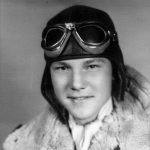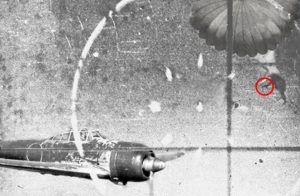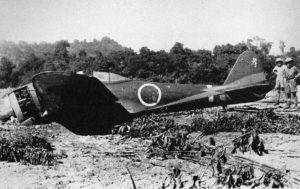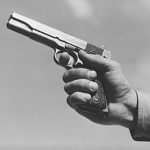
 There are many heroes in World War II, and many of their stories are never told. Many of them just did their job and went on to the next mission. It’s the ones who got shot down, sunk, shot on the ground, or captured that always seem to be remembered. It’s the way of things, I guess, but sometimes someone come across a story of bravery that is so intriguing that it must be told.
There are many heroes in World War II, and many of their stories are never told. Many of them just did their job and went on to the next mission. It’s the ones who got shot down, sunk, shot on the ground, or captured that always seem to be remembered. It’s the way of things, I guess, but sometimes someone come across a story of bravery that is so intriguing that it must be told.
Owen John Baggett was born on August 29, 1920, in Graham, Texas to John M. and Mary Pearl Baggett. He was always known for his quick smile and kind words. He graduated from Hardin–Simmons University in 1941, where he was the band’s drum major. After graduation, he was employed as a defense contractor on Wall Street. Baggett enlisted in the Army Air Forces and graduated from pilot training on July 26, 1942, at the New Columbus Army Flying School. Baggett achieved the rank of second lieutenant and was a member of the 7th Bomb Group based at Pandaveswar, in India, during the World War II.
On March 31, 1943, while stationed in British India, Baggett’s squadron, was ordered to destroy a bridge at Pyinmana, Burma. It was a dangerous mission, as the bridge would be heavily guarded. Before the squadron could reach their target, the 12 B-24s of 7th Bomber Group were intercepted by 13 Ki-43 fighters of 64 Sentai Imperial Japanese Army Air Service. Almost immediately, Baggett’s plane was severely damaged and was set on fire by several hits to the fuel tanks. There would be no recovery from this, and the crew was forced to bail out. They escaped the crippled B-24 only seconds before it exploded. Then began the next horror. The Japanese pilots began attacking the US airmen as they parachuted to earth. This was a brutal practice designed to insure that the airmen could be rescued, smuggled out of occupied territory, and put back in the air to fight anther day. Two of the crewmen were killed in the air. It was at first thought that the pilot, Lloyd K. Jensen was “summarily executed”, but he actually survived the war. Baggett, who had been wounded, decided to play dead, hoping the enemy pilots would ignore him, but one Ki-43 fighter flew close to Baggett and slowed to make sure. The opportunity was too good to pass up, and when Baggett saw the pilot open his canopy and decided to take a chance. He drew his .45 caliber M1911 pistol and fired four shots at the pilot. He was a good shot, and the bullets hit their mark. Baggett watched as the plane stalled and plunged toward the ground.
My guess is that Baggett had no idea of the enormity of his actions. He later found out that he was famous. Baggett was the only person ever to shoot down an aircraft using a pistol. Of course, in true Japanese style, they claimed that “no Japanese planes were lost during this action. They said that the pilot (wounded or not) regained control of his aircraft and flew it back to his airfield.” I submit that they weren’t there. Still, Baggett hadn’t seen it either, but his doubt came to an end when his paths crossed with Colonel Harry Melton, commander of the 311th Fighter Group, who had also been shot down that day. Melton saw the plane, and could confirm that Baggett had shot down an enemy plane with a simple .45 caliber handgun. It was an amazing feat of multi-tasking. Baggett, of course, still had to land and was immediately captured by Japanese soldiers on the ground. He remained a prisoner of the Japanese for the rest of the war…2½ years. Baggett and 37 other POWs were liberated at the war’s end by eight OSS agents who parachuted into Singapore.

 Baggett was always grateful that his life was spares, and wanted to give back. While he was assigned to Mitchel Air Force Base, Baggett was noted for his work with children, including sponsoring a boy and a girl to be commander for a day. In 1973, at the age of 53, Baggett retired from the Air Force as a colonel. He later worked as a defense contractor manager for Litton. Retired Colonel Owen Baggett died at peace and dignity July 27, 2006 in New Braunfels, Texas.
Baggett was always grateful that his life was spares, and wanted to give back. While he was assigned to Mitchel Air Force Base, Baggett was noted for his work with children, including sponsoring a boy and a girl to be commander for a day. In 1973, at the age of 53, Baggett retired from the Air Force as a colonel. He later worked as a defense contractor manager for Litton. Retired Colonel Owen Baggett died at peace and dignity July 27, 2006 in New Braunfels, Texas.


Leave a Reply